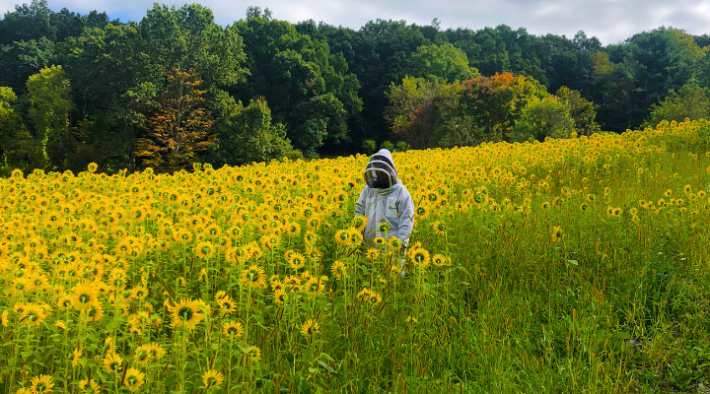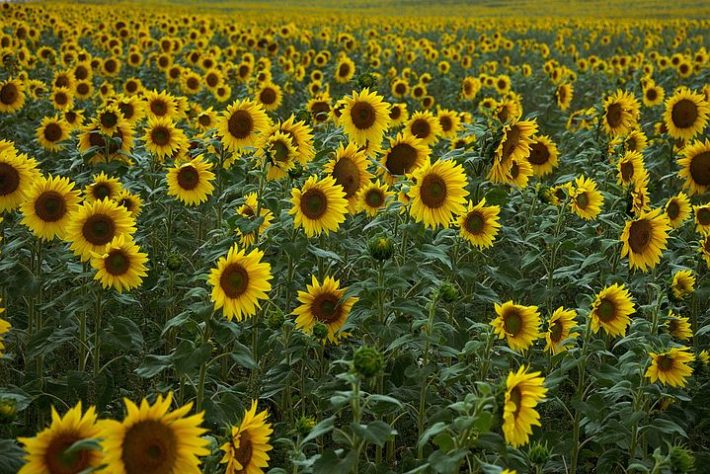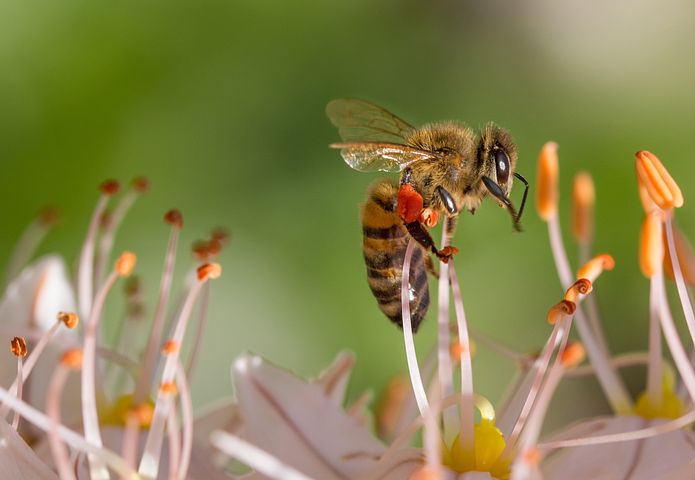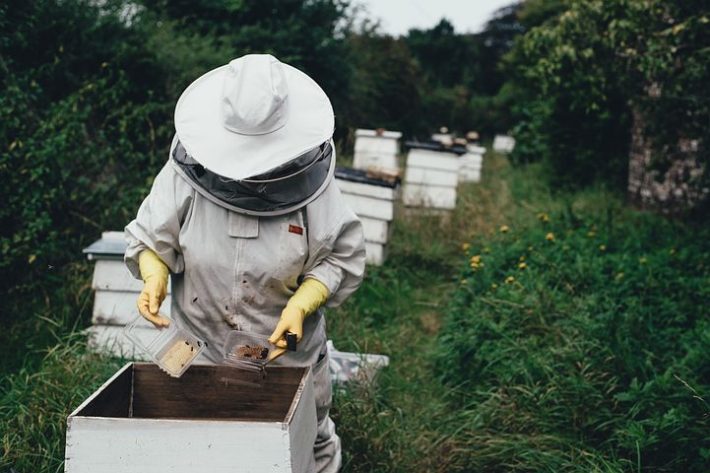How do sunflowers help bees withstand diseases?
Two new papers from the University of Massachusetts Amherst investigate the ability of sunflowers to combat diseases in bumblebees.

Insect pollinators contribute upwards of $200 billion in annual ecosystem services worldwide. We depend on pollinators to sustain our diverse, healthy and nutritious diets. However, many pollinators are suffering an unprecedented decline due to widespread use of pesticides, habitat loss, and other causes.
One of the biggest breakthroughs in helping pollinators, especially bees, is the discovery that certain flowers can help pollinators to resist diseases and infections. Sunflowers are particularly effective at combatting a widespread pathogen called crithidia bombi, that lives in the guts of bees.
Laura Figueroa, lead author of a Functional Ecology paper on this topic, explained “We know that health benefits from some foods come from the specific chemicals inside them. But we also know that some foods are healthy due to their physical structure – think of foods high in fibre.”
To discover exactly how sunflowers help bees withstand C. bombi, researchers devised an experiment hinged on separating the pollen’s spiny outer shell from the chemical metabolites in the pollen’s core. The empty spiny shell was mixed into pollen fed to the first batch of bees. The second batch of bees were fed pollen sprinkled with the chemical metabolites, but no shell.

“We discovered that bees eating the outer shell on it’s own had the same response as bee’s feeding on whole sunflower pollen,” furthered Figueroa. “However, they suffered 87% less C. bombi infections compared to bees feeding on the chemical metabolites with no shells.”
Researchers also fed bees with pollen from ragweed, cocklebur, dandelion and dog fennel – all members of the sunflower family with similarly spiny pollen shells. These bees also had low rates of C. bombi, similar to those who ate the whole sunflower pollen. This raises the possibility that disease-fighting qualities may be common to most plants in the sunflower family.
One of the counterintuitive aspects of the research is that sunflower pollen is not very nutritious. Whilst pollen may be great at protecting bumblebees from C. bombi, it would make no sense to feed them sunflowers if it results in malnutrition.
This is where Lynn Adler, senior author of a second Amherst paper comes in. She explained “It’s no good curing the common cold if you’re starving the patient. We need to look at the community level as well as what’s happening in bees’ guts, to know how to help them.”

One way to gauge a colony’s health is by looking at the number of queens it produces, as queens enable a colony to pass on its genes to the next generation. Colonies use collected food resources to turn a small number of bee larvae into daughter queens.
Once the winter arrives, all the worker bees will die along with the old queen. However, if the daughter queens survive the season, they will produce entire new colonies in the spring. Therefore, the more queens a colony can produce, the higher the likelihood will be that their genes will be passed down through many generations of bees.
Adler and her team tested the impact of sunflowers on colony health. To do this, they placed commercial bumblebee colonies on 20 farms in Western Massachusetts, all of which grew various amounts of sunflowers. Over several weeks, the team sampled pathogens in the bees’ guts, and weighed the colonies to determine whether or not they were thriving. They also counted the number of daughter bees.

Rosemary Malfi, lead author of the paper commented “We found that infection decreased when there was increased amounts of sunflower abundance. Queen bee production also increased by 30% for every order of magnitude increase in the availability of sunflower pollen.”
Though there is more research to be done surrounding exactly why sunflower pollen benefits queen bees, Adler asserts “It’s really exciting to show that sunflowers not only reduce disease, but positively affect reproduction.”
This article was adapted from a University of Massachusetts Amherst press release.
Read both papers here:
, , , , , , , & (2023). Sunflower spines and beyond: Mechanisms and breadth of pollen that reduce gut pathogen infection in the common eastern bumble bee. Functional Ecology, 00, 1– 13. https://doi.org/10.1111/1365-2435.14320
Like what we stand for?
Support our mission and help develop the next generation of ecologists by donating to the British Ecological Society.